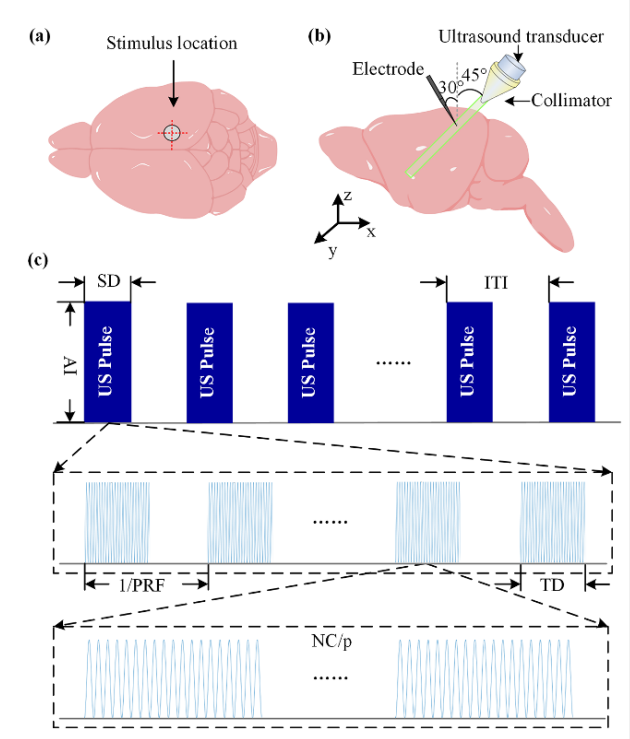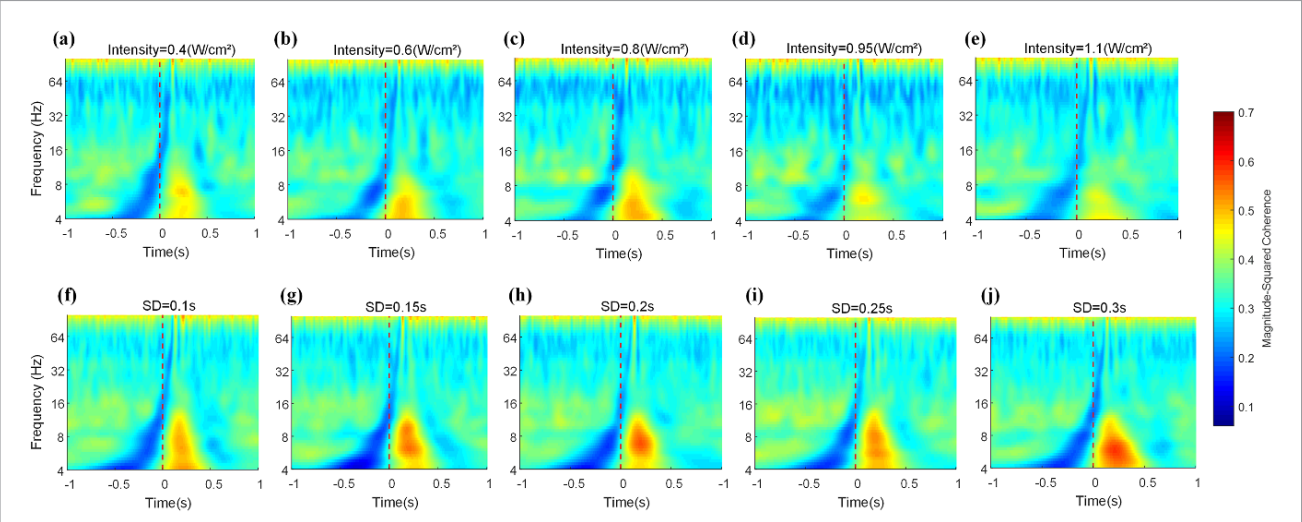


Ping Xie*, Yingying Hao, Xiaoling Chen*, Ziqiang Jin, Shengcui Cheng, Xin Li, Lanxiang Liu, Yi Yuan and Xiaoli Li.
Objective. Transcranial ultrasound stimulation (TUS), a large penetration depth and high spatial resolution technology, has developed rapidly in recent years. This study aimed to explore and evaluate the neuromodulation effects of TUS on mouse motor neural circuits under different parameters. Approach. Our study used functional corticomuscular coupling (FCMC) as an index to explore the modulation mechanism for movement control under different TUS parameters (intensity [${I_{{\text{sppa}}}}$] and stimulation duration). We collected local field potential (LFP) and tail electromyographic (EMG) data under TUS in healthy mice and then introduced the time-frequency coherence method to analyze the FCMC before and after TUS in the time-frequency domain. After that, we defined the relative coherence area to quantify the coherence between LFP and EMG under TUS. Main results. The FCMC at theta, alpha, beta, and gamma bands was enhanced after TUS, and the neuromodulation efficacy mainly occurred in the lower frequency band (theta and alpha band). After TUS with different parameters, the FCMC in all selected frequency bands showed a tendency of increasing first and then decreasing. Further analysis showed that the maximum coupling value of theta band appeared from 0.2 to 0.4 s, and that the maximum coupling value in alpha and gamma band appeared from 0 to 0.2 s. Significance. The aforementioned results demonstrate that FCMC in the motor cortex could be modulated by TUS. We provide a theoretical basis for further exploring the modulation mechanism of TUS parameters and clinical application.
目的。经颅超声刺激(TUS)是一种穿透深度大、空间分辨率高的技术,近年来发展迅速。本研究旨在探索和评估经颅超声刺激在不同参数下对小鼠运动神经回路的神经调节作用。研究方法我们的研究以功能性皮质肌肉耦合(FCMC)为指标,探讨不同 TUS 参数(强度[]和刺激持续时间)下运动控制的调节机制。我们收集了健康小鼠在 TUS 条件下的局部场电位(LFP)和尾部肌电图(EMG)数据,然后引入时频相干方法,在时频域分析了 TUS 前后的 FCMC。然后,我们定义了相对相干区,以量化 TUS 下 LFP 和 EMG 之间的相干性。主要结果TUS后,θ、α、β和γ频段的FCMC均有所增强,神经调控功效主要体现在低频段(θ和α频段)。在使用不同参数进行 TUS 后,所有选定频段的 FCMC 都呈现出先上升后下降的趋势。进一步分析表明,θ 频段的最大耦合值出现在 0.2 至 0.4 秒之间,α 和γ 频段的最大耦合值出现在 0 至 0.2 秒之间。上述结果表明,运动皮层中的 FCMC 可被 TUS 调节。我们为进一步探索 TUS 参数的调制机制和临床应用提供了理论依据。